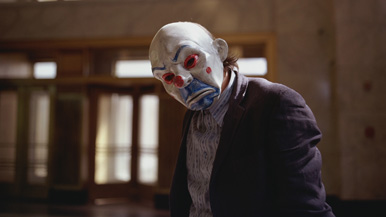|
|
Intermittent Issues:
|

|
Reality and Fusion: 3DNew at BOP: Share & Save
![]() Tweet
Tweet
![]() Print this column
Print this column
As this article is published, 3D’s third wave has crested and been receding for some time. The first real breakthrough of 3D as an added experience/marketing tool was in the mid-1950s; its revival technically started in 1970, but achieved a kind of critical mass and a very fast flameout in the early '80s. The third wave of 3D was digital, and comprised of several different offerings by different companies. Three of these offerings have maintained their prominence: IMAX 3D, Disney Digital 3D, and RealD 3D - the latter being the most common method of screening a film in 3D at a theater. These are delivery formats for 3D, but they don’t have much to do with the act of producing a film in 3D.
The title of this segment is called “Reality and Fusion”; those are both terms for the same 3D camera system, one developed by James Cameron alongside Vince Pace and Patrick Campbell, specifically for the purpose of creating a high level of immersion. The technology involved in its conception is really fairly simple: two HD professional cameras, pointing in the same direction and set at a precise distance from each other - the distance being most easily illustrated as the rough amount of space between each of our eyes. Each lens is provided with a specific filter that removes information only from that lens, which gives the impression that each eye is seeing a different image.
The viewer is provided with a pair of lightweight glasses to wear, each lens of which is polarized in a slightly different way in accordance with how the respective lens was used during filming. The visual results of the Fusion Camera System are well-known off of the performance of 2009’s Avatar, although equally attractive results were produced by Transformers 3 and On Stranger Tides in 2011 (I do not claim that either of these two movies were in any way better-looking than Avatar, because they weren’t; however, they did possess roughly the same level of 3D finesse).
Certain smaller films took advantage of Fusion, too, although for more specific and incidental reasons; Steven Quale used Fusion for his Final Destination 5, owing to his past experience as a Cameron second-unit director; Paul W.S. Anderson trumpeted the use of Fusion in 2010’s Resident Evil: Afterlife, which acquits itself well with that director’s tendency to experiment with whatever already-invented cinematic technology he can get his hands on.
|
Advertisement |
The effect of natively-shot 3D versus post-converted 3D (which we’ll get to) is somewhat subjective, but it takes the general shape of more subtle depth and texture to the image. Individuals on-screen appear to reside within their own unique space, somehow both inside and outside the screen. The tradeoff involves spontaneity and movement. A movie planned and shot for 3D will not have much of an opportunity to build momentum via fast camera movements or fast cuts. This is partly due to the strobing or ghosting effect that fast movement can have on the audience, somewhat like seeing stuttering afterimages of movement), and in large part due to viewer perception due to the inherent oddness of a 3D picture.
The editor Walter Murch wrote a letter to Roger Ebert in 2011 explaining the disparity between focus and convergence that 3D creates for the theater viewer; put very (very very) simply, it outlines an oddity where our species, which has evolved to focus and converge our eyes on the same point, is now being asked to focus at one point (the distance between us and the screen) and converge at another (the depth of the image). The extra concentration this requires is responsible, he argues, for some viewers getting headaches from attending 3D films. The other aspect of 3D that forces a filmmaker’s hand is shot length; our eyes take longer to figure out a 3D shot spatially than we do a 2D shot, which mandates longer shots in the movie.
3D in film has decreased in frequency; it would be sensible to assume that it’s partly due to the extra set of circumstances it places on the filmmaker and the audience. It would also be sensible to assume that the cost of the surcharge ended up outweighing the benefit of the manufactured extra dimension. There are a couple of major films yet to come this year that were shot in 3D: Ridley Scott’s The Martian is one, and Robert Zemeckis’ The Walk is another. Both of these are experienced technicians, though, adept in the mechanics of 3D and cognizant of how to use it in an effective way. I believe we will see fewer and fewer instances of directors picking up 3D as a new type of production choice.
[ Email this column ]

|
|
|

|
Monday, May 6, 2024
© 2024 Box Office Prophets, a division of One Of Us, Inc.

